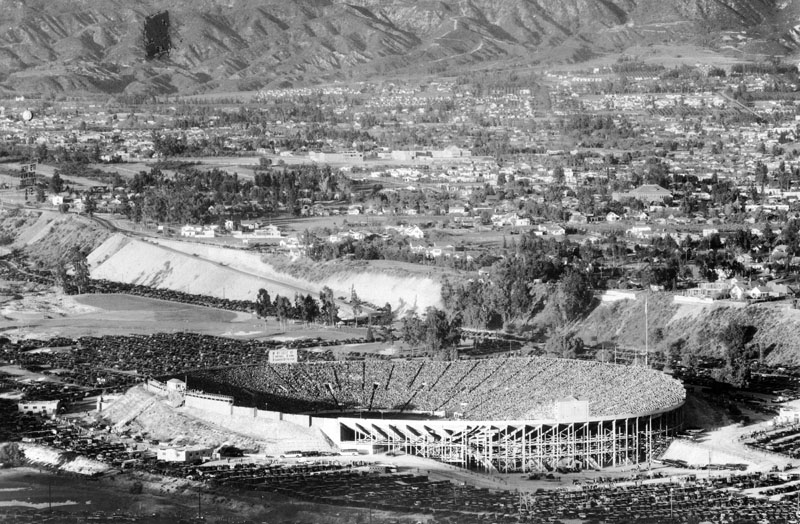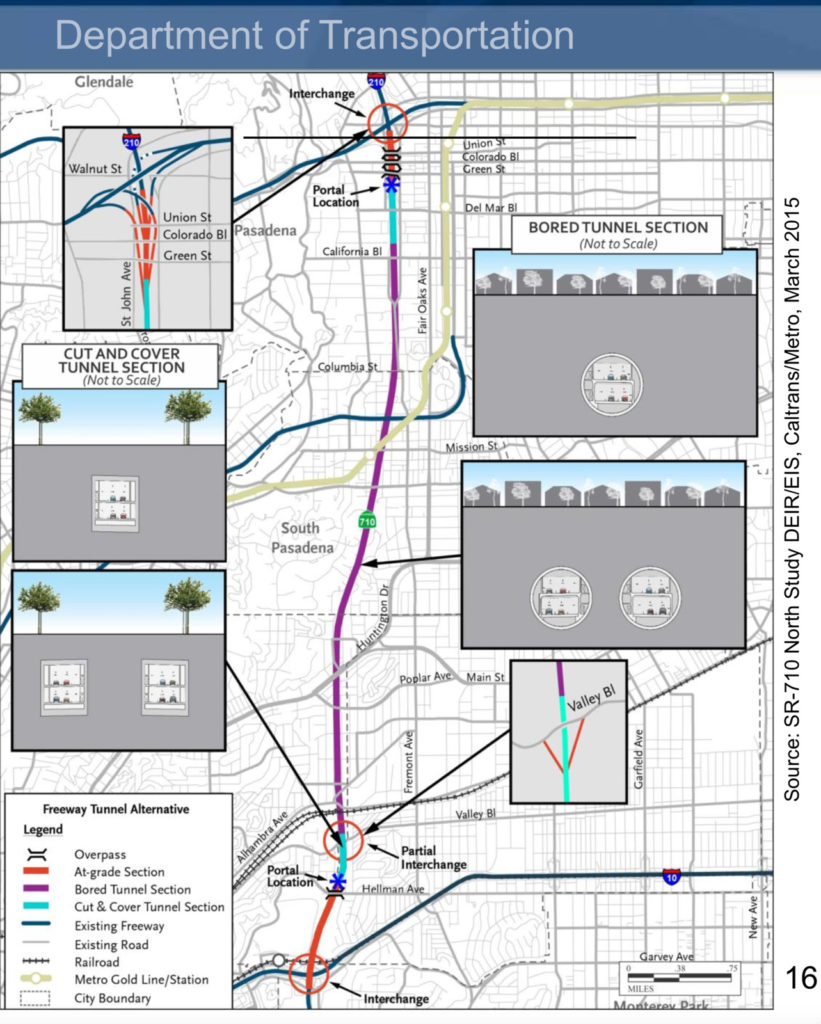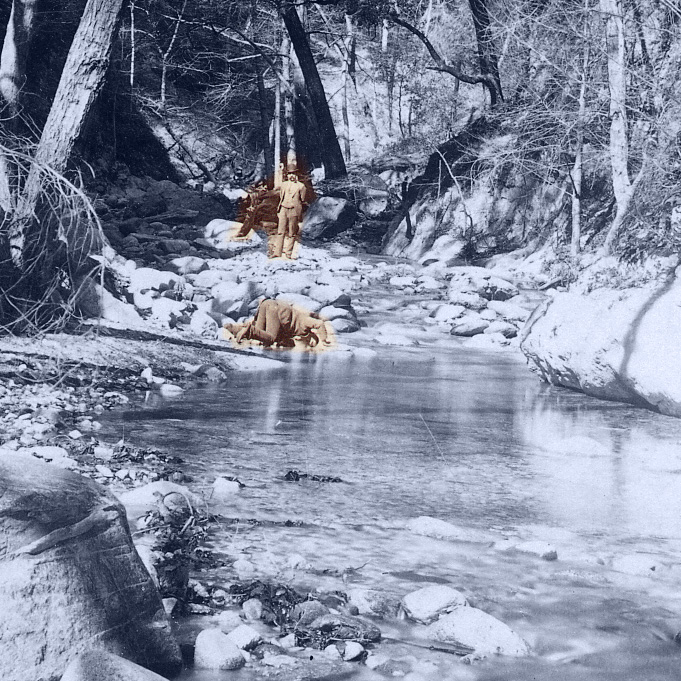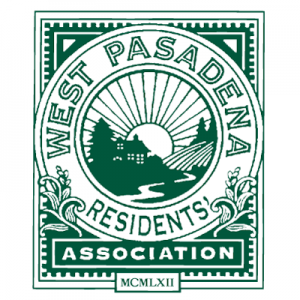WPRA presses Public Works to returning Pasadena Avenue to its original width, restoring the sidewalks and parkways with their camphor trees
Pasadena’s Central District Planning & Civic Center 2004 ‑ 2020
2004 – Joined forces with the Old Pasadena Management District, Pasadena Heritage and others to ensure that the new Central District Specific Plan would not “lead to bad development of the city’s historic downtown for the next decade, with too little park land and too much residential development.”
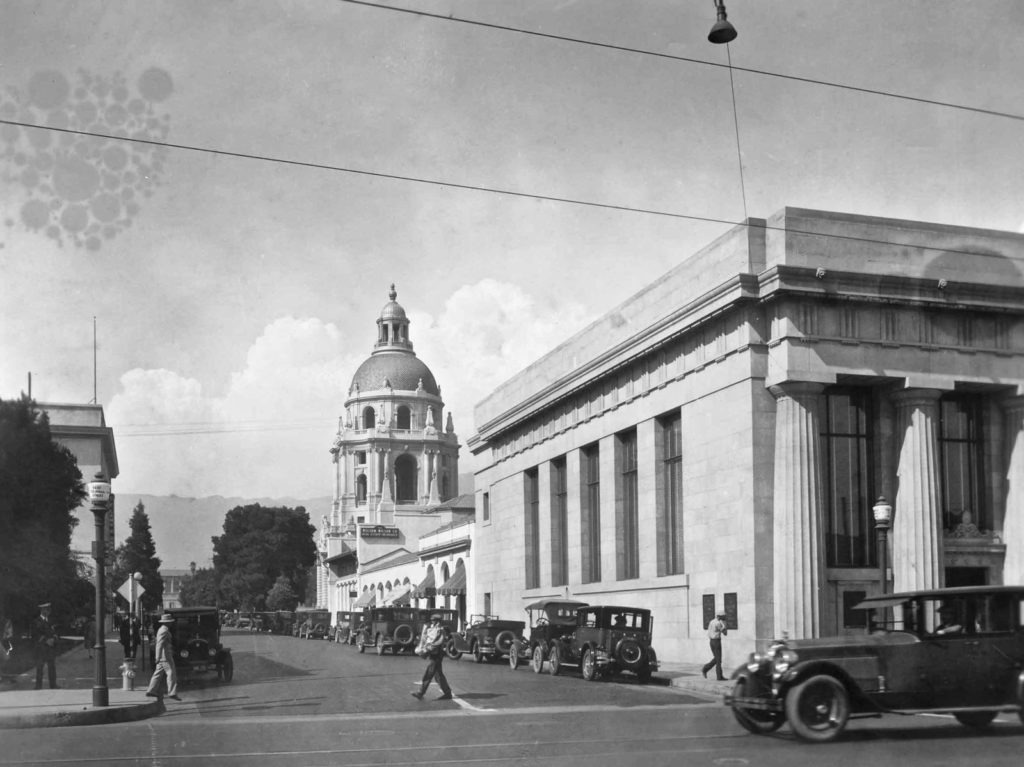
Click to enlarge.
Courtesy of the Archives at Pasadena Museum of History (C14B-28)
2012 – WPRA started monitoring City planning for Central District General Plan by advocating that change must be harmonized to preserve Pasadena’s historic character and environment.
2016 – The City presented its Draft Environmental Report for the rehabilitation of the YWCA and proposed Kimpton Hotel in the Civic Center. The majority of Pasadena residents and city planners advocated the smallest hotel foot print with the least story height and the deepest setback from Garfield Avenue. Kimpton pressed for the largest capacity of rooms it could get.

The WPRA strongly pressed the City Council to allow an adequate and early evening comment period for public debate regarding the Civic Center YWCA/Kimpton Hotel project.
WPRA’s research revealed the original Kimpton Hotel project had been converted in 2015 to a private equity investment instrument intended for resale within five to seven years. The WPRA opposed the selected project design for 185 rooms with a 30 to 40 foot setback from Garfield Avenue.
2017 – The WPRA contributed to the Pasadena Civic Center Coalition Legal Fund fighting the approved large scale, six-story Civic Center hotel project which would replace most of the open park-like space opposite City Hall.
The City Council voted unanimously to suspend the proposed YWCA/Kimpton Hotel project and instead, created a citizen task force to find a more acceptable solution for rehabilitating the YWCA and developing the Civic Center as an entire unit.
A WPRA Board Member became part of the Civic Center Task Force and conveyed the WPRA’s desired planning guidelines within the committee meetings. WPRA board members also submitted letters and spoke at these meetings within the comment periods.

2018 – The WPRA continued to work with the Civic Center Task Force and after its final meeting, the Task Force provided City Council with its recommendations. The City restarted the Civic Center development project with another round of request for proposals.
2020 – WPRA continues to monitor the City’s development for the YWCA and the Department of Water and Power lot, now designated for an affordable housing complex. WPRA still opposes the 45 setback from Garfield and continues to support the Civic Center Coalition’s CEQA suit against the City to maintain 107 foot setback of open space opposite City Hall.
Stop The NFL From Moving To The Rose Bowl 2003 ‑ 2016
2003 – The WPRAstarted tracking the NFL’s desire to be a tenant of the Rose Bowl. WPRA noted that City Council had authorized the Rose Bowl Operating Committee to explore the possibility of an NFL team becoming a tenant of the Rose Bowl, and provided a list of parameters the City should seek in its negotiations; expressed concern that the NFL was playing a “bait and switch” with Pasadena —baiting us “with an initial plan that was sensitive to the stadium’s historic nature, and then switching by subsequently pushing cost-cutting at the expense of the very historic aspects the prior plan preserved.”
2004 – The WPRA continued to express “major concerns” about the potential impact of the NFL on the Central Arroyo and the Rose Bowl Stadium.
2005 – WPRA surveyed West Pasadena citizens’ attitudes about the NFL leasing the Rose Bowl. Nearly 60% were totally against the idea while only 10% favored it. Then the WPRA issued a plea for help and contributions to oppose the NFL lease of the Rose Bowl.
Issued a plea for help and contributions to oppose the NFL lease of the Rose Bowl.

2006 – WPRA expressed disappointment that although the citizens of Pasadena and City Council (in 2005) had rejected the idea of an NFL team occupying the Rose Bowl, three councilmembers had sponsored a ballot initiative to raise the issue again.
WPRA participated to defeat the NFL in the Rose Bowl ballot initiative.
2008 – WPRA received a donation from Pasadena First, the lead organization in the successful effort to defeat the 2006 ballot initiative about the NFL in the Rose Bowl. Pasadena First hailed the WPRA as “an early and enthusiastic supporter and one of the first major contributors to the anti-NFL effort.”
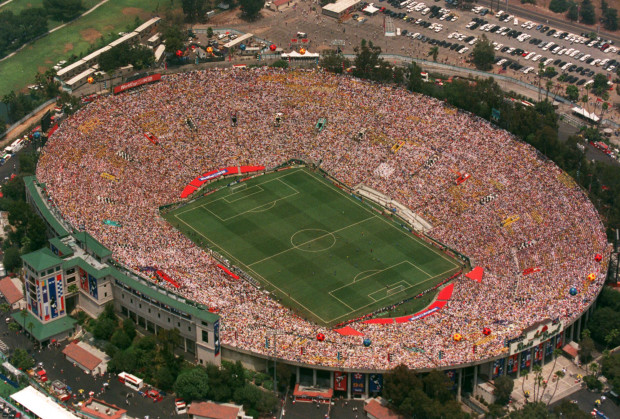
2011 – The WPRA acknowledged significant reservations about temporary use of the Rose Bowl by the NFL and agreed to take a survey.
2012 – WPRA conducted the survey of area residents about the possibility of an NFL team temporarily leasing the Rose Bowl Stadium until its permanent new stadium can be built: 43% were against the idea under any condition; 37% would consider it if certain conditions were met; 19% expressed unconditional approval of the idea. The WPRA publically opposed the temporary use of the Rose Bowl by the NFL and supported other neighborhood organizations’ lawsuit to legally challenge the City Council’s certification of the Environmental Impact Report (EIR) related to the potential temporary lease of the Rose Bowl by an NFL team.
2013 – The WPRA helped fund the legal action against the City for certifying the EIR which inadequately addressed neighborhood impacts if the NFL temporarily leases the Rose Bowl. The NFL never did gain access to the Rose Bowl.
2016 – Having prevented the NFL’s attempt to convince the City to allow it a temporary lease,
WPRA continued to monitor the rising number of other Rose Bowl events and their impacts to the surrounding neighborhoods.
Ambassador Campus Development 1992 ‑ 2014
1992 – WPRA interviewed Mike Snyder, assistant director of public affairs for the World Wide Church of God about selling its Ambassador College property for future development.
1999 – The WPRA urged residents to participate in the planning process for Legacy Partners which purchased the 50-acre former Ambassador College property from the World Wide Church of God for an estimated $59 million. It planned to build 1,943 units on the West campus and the East campus.
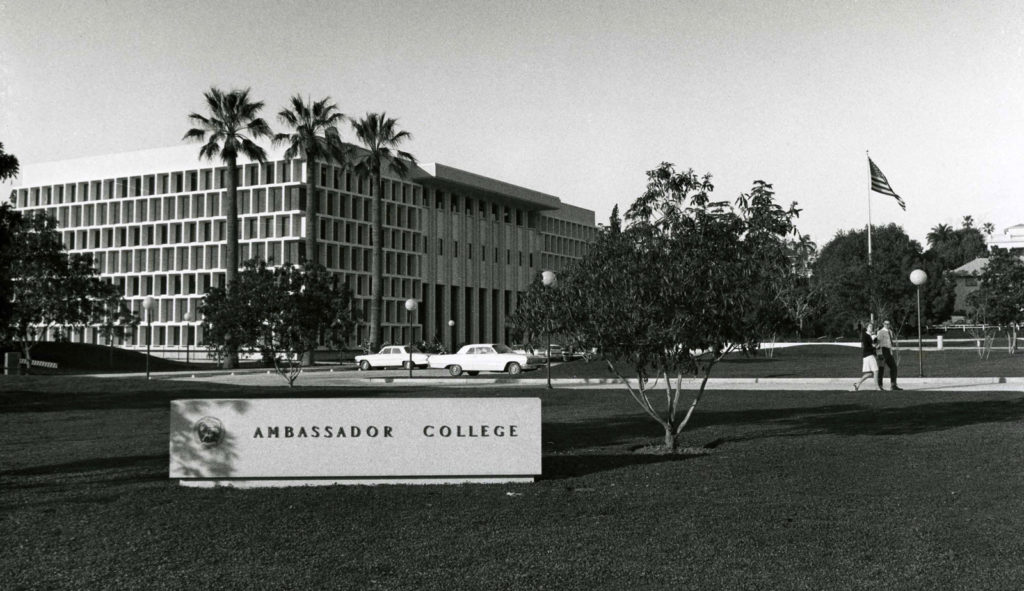
Click to enlarge.
Courtesy of the Archives at Pasadena Museum of History (A3-14)
2002 – WPRA categorically opposed the Legacy Project’s high density housing proposal, even when the developer reduced the projected units from 1,943 to 1,727.
Surveyed San Rafael area residents to identify their top concerns: overdevelopment in West Pasadena (i.e., the Legacy Project) and the growing traffic problem.
To help mitigate congestion around the proposed Ambassador Campus Development Plan (Legacy Project), the WPRA retained a traffic consultant to conduct an independent professional analysis of traffic impact out of concern that the proposal was so large it would increase the number housing units in the WPRA service area by 40%. Consequently, Legacy withdrew from the Project.
2003 – WPRA continued to address the Ambassador West Campus proposal by conducting another survey among residents of the WPRA service area and adopting a position about a reduced density and traffic congestion.
The WPRA adopted principles for the development of the Ambassador West Campus, stipulating: lower density, restricted height, compatibility and controlled traffic requirements.
2004 – Continued opposing the Worldwide Church of God campus development and announced that the church had sold five single-family homes on the Ambassador College West campus to private individuals (after the homes had been declared City Landmarks), sold the East campus to Sares-Regis Group for development, and submitted its own plan for the West campus, which included demolition of Ambassador Auditorium and construction of 696 housing units.
2005 – Opposed the Sares-Regis’ plan to construct 829 multi-family units and 30,000 square feet of retail/commercial development in the Ambassador College East campus.
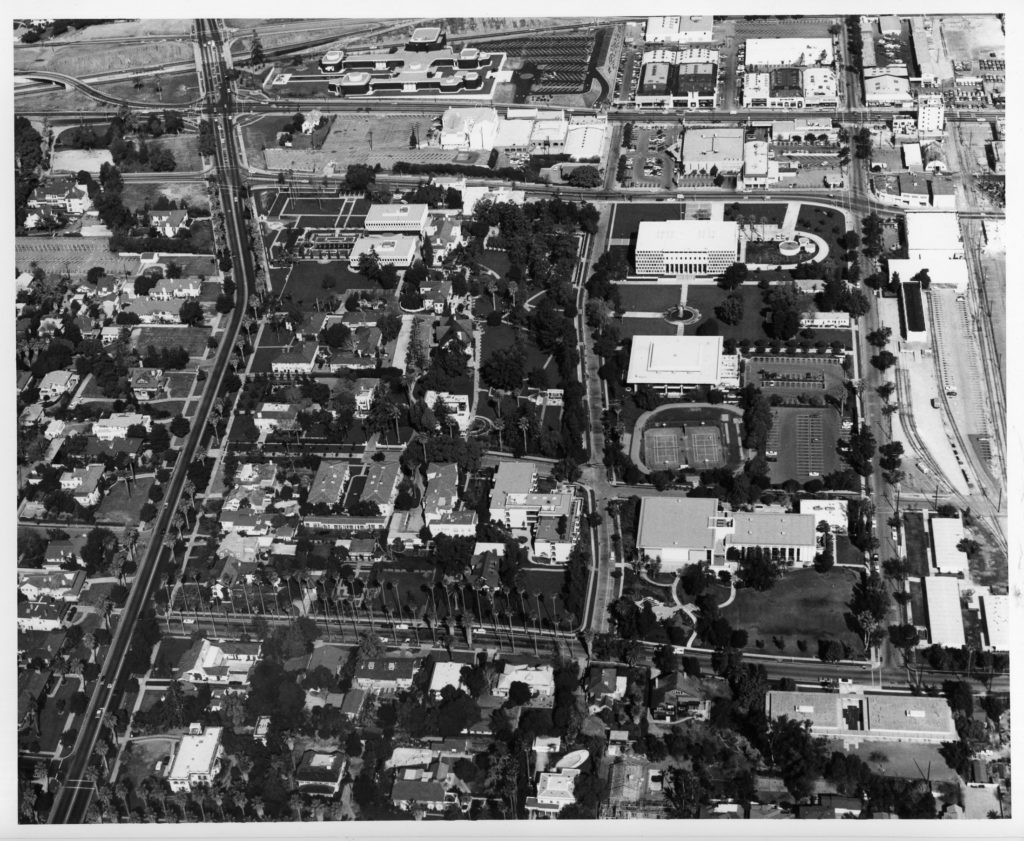
Click to enlarge.
Courtesy of the Archives at Pasadena Museum of History (A3–23)
2006 – After reviewing the Draft Environmental Report, the WPRA continued to express concerns over the density of the Sares-Regis proposal to develop the Ambassador East and West campus projects, questioning the validity of the draft environmental impact statement and challenging the idea that the so-called “urban village” project was consistent with the General Plan and the Central District Specific Plan.
2007 – The WPRA continued to track the Ambassador West Project as developers changed, announcing that Standard Pacific Homes had pulled out of the Ambassador West project, purchased from the Worldwide Church of God by a consortium of investors headed by developer Dorn Platz.
2008 – Continued to track the Ambassador West Project as developers changed again. Announced that Dorn Platz had withdrawn from the Ambassador West project. Also noted that ACP Properties and Ambassador Acquisition Coalition Partners II had defaulted on a $44 million loan and gone into receivership.
2012 – The WPRA maintained its monitoring of the Ambassador West Project as developers changed once more – Arroyo Realty withdrew from the project, City Ventures started construction on first ten homes along Del Mar.
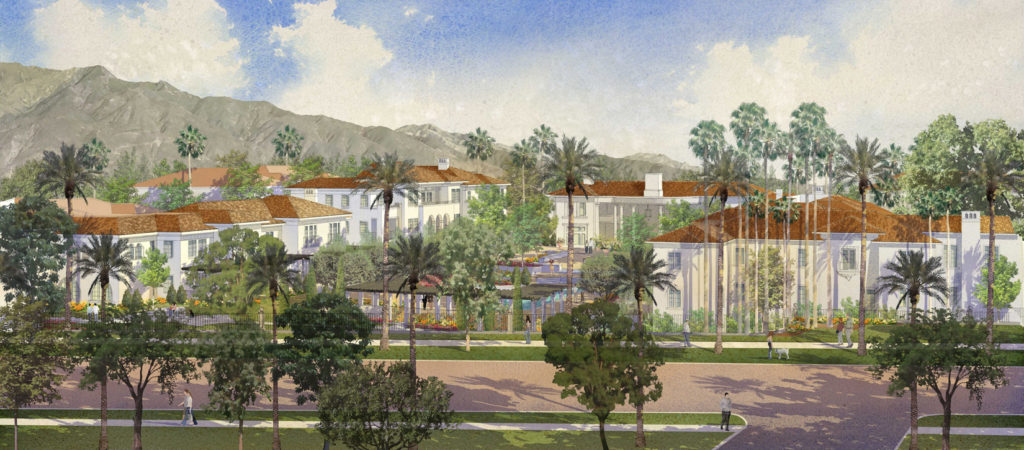
2013 – WPRA continued its oversight of the Ambassador Campus construction beyond the completion of the first ten units along Del Mar.
2014 – WPRA continued to consult with Ambassador Gardens East project manager as the design moved forward for lower campus and what would become the west campus named the “Grove” and “Jaimeson Place”.
Caltrans & Metro’s Push To Build The SR710 Tunnels 1989 ‑ 2019
1989 – The WPRA drew attention to the revival of the extended Long Beach Freeway campaign, now referred to as the SR-710 “closing the gap” freeway.
1991 – The WPRA sponsored a Freeway Forum focusing on 710 Freeway Final Environmental Impact Statement (FEIS) and the 25-year-old freeway plan. At this time, the City was supporting the closing of the 710 gap with a freeway through Pasadena and South Pasadena. The WPRA Board secured an independent traffic consultant to provide an independent perspective on the impacts of the proposed project.
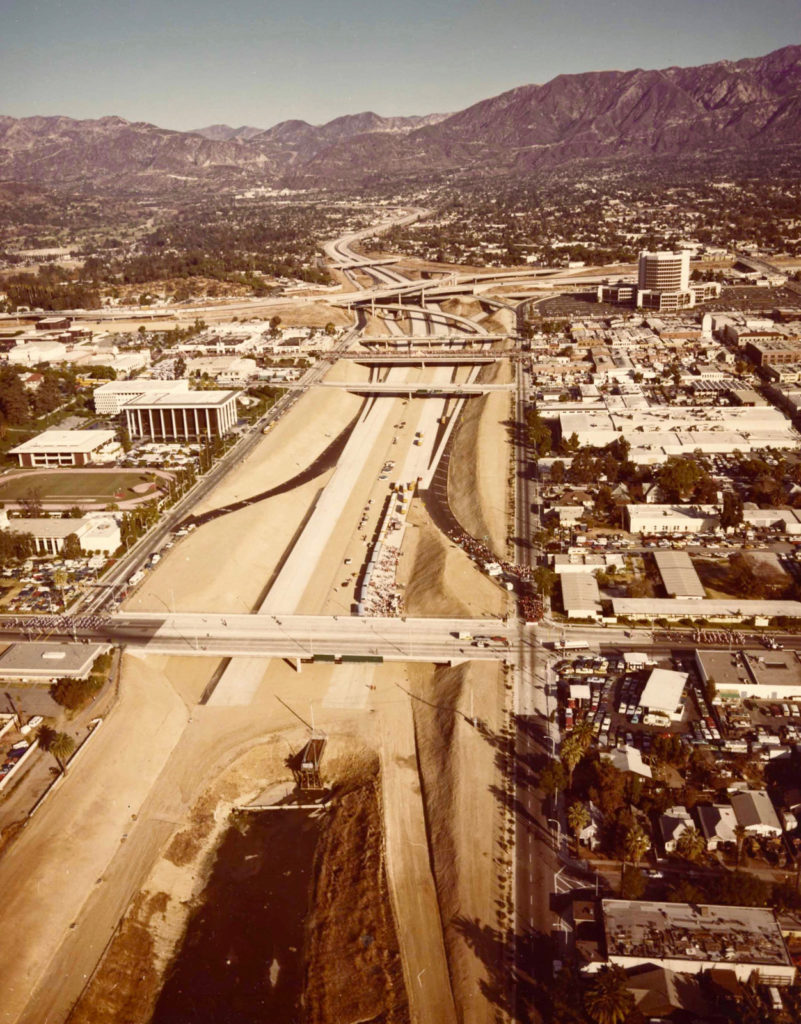
Click to enlarge.
Courtesy of the Archives at Pasadena Museum of History (C12-133)
1992 – In response to the concerns voiced during the June, 1991 WPRA Forum on traffic issues and the 710 Freeway, the Pasadena Department of Public Works commissioned a traffic circulation study of certain residential and commercial streets in the Southwest Pasadena area.
WPRA strongly advocated that commuter north-south traffic on Orange Grove be addressed with factual statistics.
1993 –The WPRA initiated the Southwest Pasadena Traffic Study sought realistic methods to manage and “diffuse” traffic in areas that are overburdened by commuter traffic, especially feeding into the Pasadena Freeway and traffic exiting the end of the 710 “stump” at California.
2001 – WPRA reported the results of a city-wide election regarding the proposed 710 freeway extension. West Pasadenans bucked the city vote by opposing winning Measure A (which established the City’s official position as “in favor” of the extension) and by supporting losing Measure C (which would have mandated a city-wide traffic and transportation study).
2002 – The WPRA supported efforts of West Pasadena residents who lease homes from Caltrans along the 710 corridor to form the “Caltran Tenants of the 710 Corridor”.
2012 – WPRA publically ramped up its full scale opposition to the proposed SR710 freeway tunnels with an alert to the community stating that Metro was pushing a predetermined agenda with misleading information.
2013 – WPRA continued to publically explain through its newsletters how Metro’s proposed SR710 tunnel project was unfeasible to build and would not ease neighborhood traffic congestion.
2014 – Regarding Metro’s presumed intention to close the SR-710 gap with tunnels, the WPRA committed to further independent analysis of all the elements of the plan that could negatively and uniquely impact Pasadena.
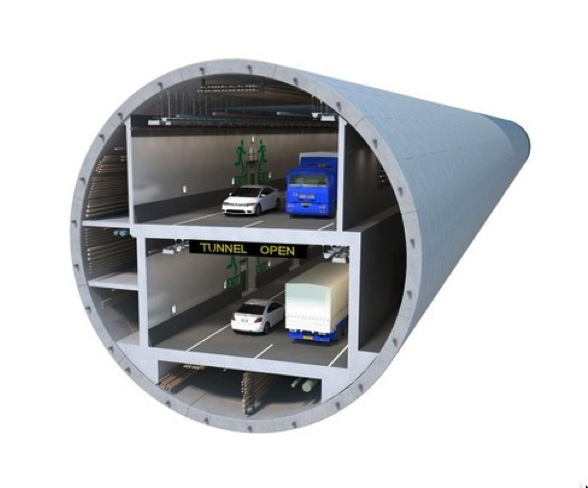
2015 – WPRA increased its vigilance of opposition against the proposed SR-710 tunnel alternative by devoting almost the entire winter publication of WPRA’s The News for public awareness and asking for additional funding to fight the tunnels project and creating an independent expert response team.
WPRA analysis found the SR-710 Draft Environmental Report grossly inadequate. The WPRA response team believed the report showed clear bias in favor of the tunnel alternative.
2016 – The WPRA continued to alert the public about the adverse environmental impacts caused by the future tunnel.
WPRA supported the Connecting Pasadena Project which created an urban development design which would replace the North SR 710 stub dug deep into the ground for the proposed freeway or tunnels intended to “close the gap.”
2017 – WPRA celebrated LA Metro’s Board’s unanimous vote against the SR710 tunnel alternative and its selection of the Transportation System Management/Transportation Demand Management (TSM/TDM) alternative.
2018 – In lieu of the rejected tunnel alternative, WPRA supported all of Metro’s proposed mobility improvements except the closure of the 134/210 on and off ramps.
WPRA urged City Council to cite Caltrans for code violations and call out Caltrans’ unethical tactics toward the current Caltrans 710 corridor property renters and buyers.
WPRA hired counsel in the advent that WPRA and other stakeholders needed to sue Caltrans to finally stop any potential movement to reinitiating the tunnel alternative project.
2019 – Caltrans dropped the tunnel alternative entirely from future development. In view of the victory, WPRA released its legal counsel.
Save San Rafael School 1988 ‑ 2016
1988 – The WPRA promoted San Rafael Elementary, pointing out that “diversity of the school population enables children to work on academics while becoming comfortable with people of many different cultural backgrounds,” within the WPRA Newsletter.
1992 – On the front page of the West Pasadena Residents’ Association News, the WPRA reached out to the community to encourage more volunteers to help in the classrooms.
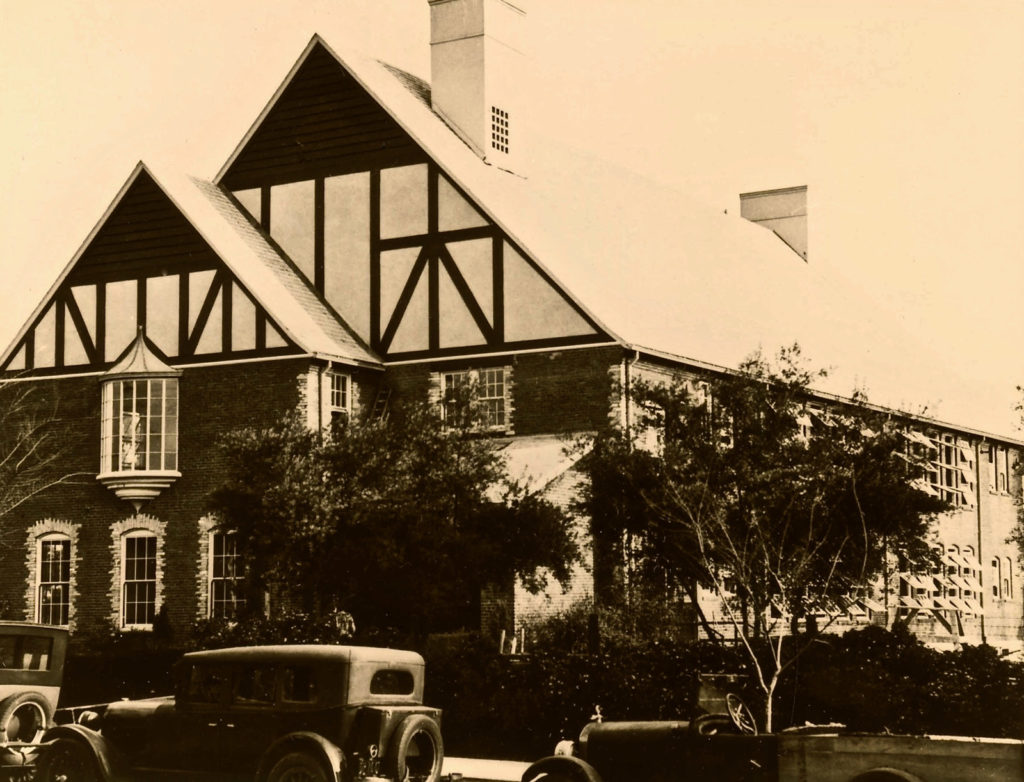
Click to enlarge.
Courtesy of the Archives at Pasadena Museum of History (S29-3)
2008 – The WPRA developed, introduced and sponsored student enrichment programs for San Rafael Elementary School.
2005 – WPRA opposed the Pasadena Unified School District’s proposal to close San Rafael Elementary School.
2011 – Opposed the Pasadena Unified School District’s proposal to close San Rafael Elementary School and the City’s attempt to relocate Fire Station 39 to the school’s playground.
2012 – Having officially “adopted” San Rafael Elementary School, WPRAstarted working with the west side community to support the means to save it from demolition due to earthquake geophysical testing.
2013 – WPRA board members became part of the “7-11 Committee” which provided recommendations relating to future uses of the San Rafael Elementary property.
As the community desire for San Rafael Elementary enrollment rose, the WPRA maintained its support for keeping the school open beyond 2014. The proposed closing date was pushed to 2015.

2014 – Three WPRA Board members are appointed by the Pasadena Unified School District to a Surplus Property Advisory Committee to consider the future of San Rafael Elementary. In their report, the Committee recommended that the PUSD Board not declare the property surplus. The potential closure of San Rafael is delayed again to at least 2016.
2015 – In its continued efforts to save San Rafael Elementary, WPRA publically opposed the PUSD Board for voting unanimously to declare the school surplus property, easing the process of closing the school.
The WPRA pressed for a re-examination of the earthquake geology survey with trenching on the San Rafael property to confirm whether or not the suspected faults did, in fact, exist and if they were active. With a new superintendent and school board, the authorized second survey showed no active faults. The surplus property designation was removed.
2016 – WPRA continued its support of San Rafael Elementary with donations and the publication of its many successes and challenges. The school flourished.
Save the Trees and Open Spaces 1981 ‑ 2019
1981 –WPRA funded Friends of the Arroyo to replace live oaks near the Colorado Street Bridge
Contributed $1,380 to the Recreation and Parks Foundation (created in 1980 for citizens to contribute to their favorite park or any park in the city) for improvements in the Lower Arroyo.
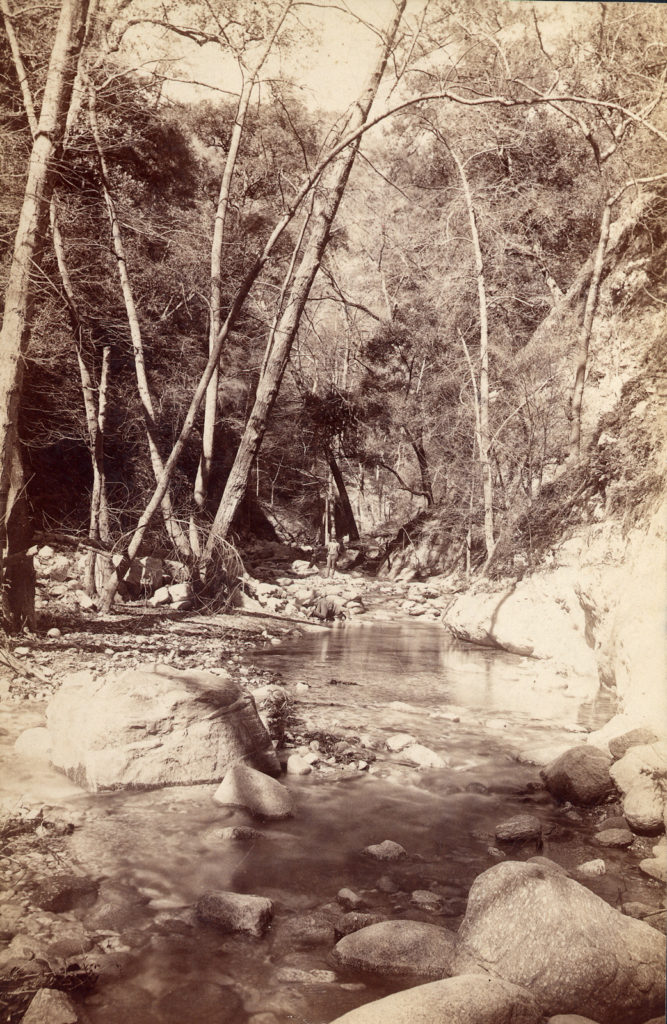
Click to enlarge
Courtesy of the Archives at Pasadena Museum of History (A7-1)
2002 – Supported a strengthening of the City’s tree protection ordinance. Many landmark, specimen and native trees on private property were being illegally removed or irreparably damaged.
2006 – WPRA started monitoring the re-use of the Desiderio Army Reserve Center, then open for redevelopment and participated in the public comment process.
2007 – WPRA engaged in the discussion about City Council’s decision to approve forDesiderio Army Reserve Center (under the Colorado Street Bridge) a nine-unit affordable bungalow court to be built by Habitat for Humanity, with 75% of the space devoted to open space and a possible art/environmental center, once the federal government releases the property to the City.
2008 –Made the case for preserving open space and purchasing more of it.
The WPRA continued stewardship of parks and open space by urging City to use at least 50% the Residential Impact Fees collected from new development for park acquisition and to reverse the practice of using the fees for maintenance.
2011 – The WPRA Newsletter ran an article about preserving the City’s oak trees.
Recommended a plan to ensure the continued safe operation of the archery range and to preserve access to all of the Arroyo Seco.
2012 – Donated to Pasadena Beautiful’s “Windstorm Tree Fund,” which was created to raise funds to replace the trees lost during the “Hurricane Rose” windstorm of Nov.30 – Dec.1
2013 – The WPRA Newsletter reprinted the article about preserving the City’s stately oaks.

WPRA planting a tree
2014 – WPRA alerted its residents to the arrival of the polyphagous shot hole borer, a tiny beetle that is attacking Pasadena’s trees.
The WPRA formally objected to the County’s aggressive remediation plan for removing 5 million cubic yards of more of dirt and debris from the Devil’s Gate Dam and advised alternatives.
2018 to 2019 – The WPRA continues to demand ecological responsibility for the trees, shrubs and wildlife when removing the debris from behind the Devil’s Gate Dam.
2019 – WPRA publically addressed the City’s allowance of zero-setback for new commercial construction along Green and other streets which seriously contributed to the loss of trees along the sidewalks.
The Arroyo Seco 1979 ‑ 2021
1979 – WPRA expressed concern about encroachment into the Arroyo Seco by a proposal for a 16-unit condominium at 50 North Arroyo.
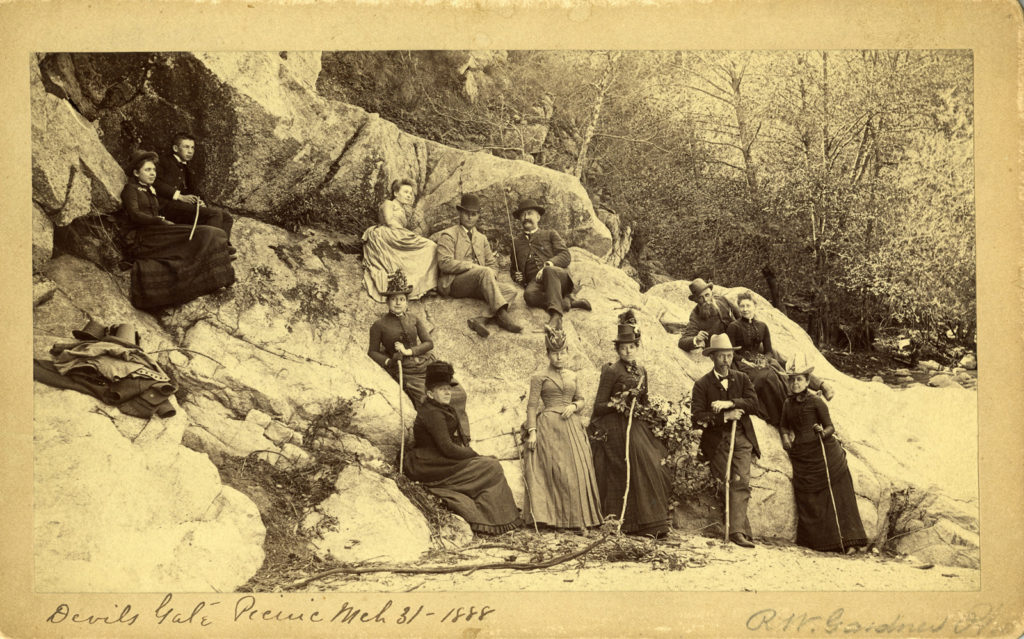
Click to Enlarge.
Courtesy of the Archives at Pasadena Museum of History (E1-13)
1982 – Urged passage of the Arroyo Seco (preservation) ordinance with revisions, especially related to plans to permit parking on turf areas new the Rose Bowl.
1983 – WPRA joined with the City of Pasadena and the Atlantic Richfield Foundation to fund a study of the endangered Colorado Bridge landmark spanning the Arroyo Seco.
1984 – Endorsed plans to divert water in the Lower Arroyo Seco from the flood control channel to create a 300 yard free-flowing stream along the east side of the channel.
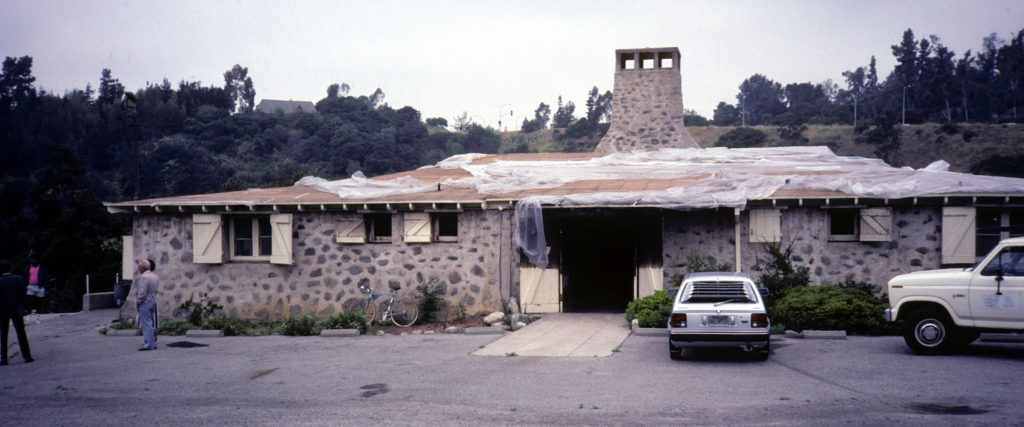
1985 – Established a liaison with the Pasadena Garden Club and the Friends of the Arroyo to help restore La Casita del Arroyo, which was severely damaged when someone broke in and set three fires.
Also, the WPRA established another sub-committee to review the EIR on a land exchange in which the City would acquire the U.S. Army Reserve Armory Desiderio site.
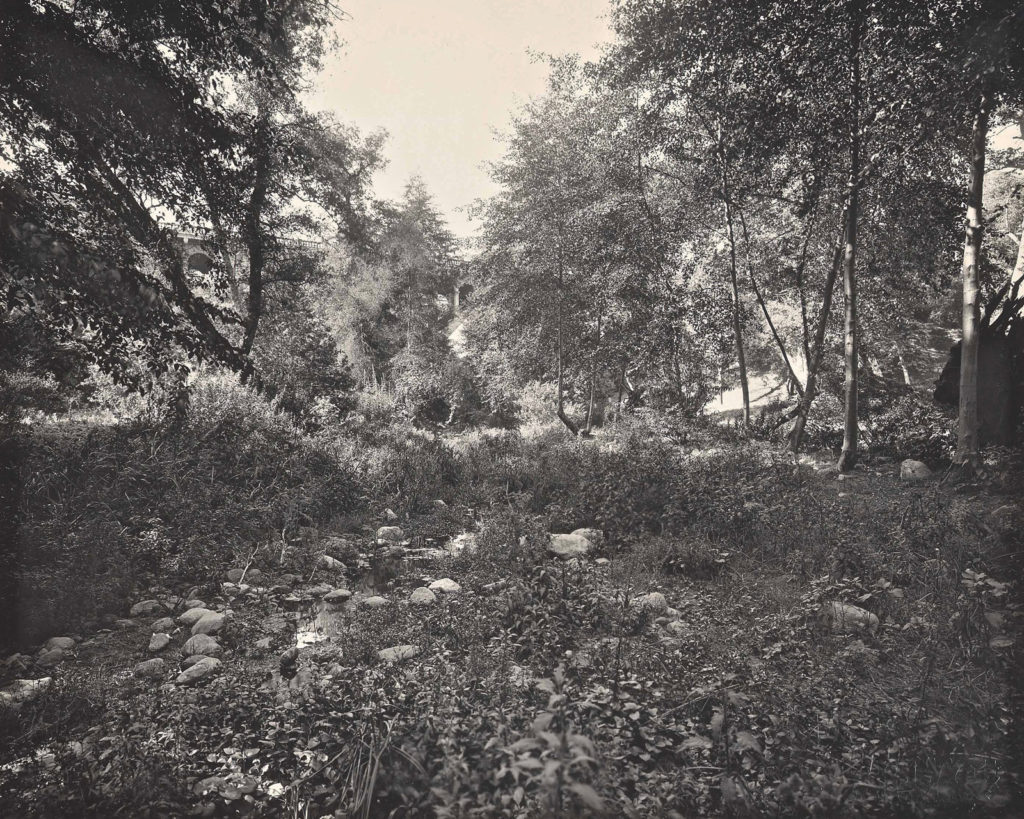
Click to enlarge.
Courtesy of the Archives at Pasadena Museum of History (A7-66)
1986 – WPRA contributed $1000 for a fund raising drive toward the restoration of La Casita.
1990 – Members of WPRA’s Board of Directors were appointed to the City’s Arroyo Task Force.
2002 –The WPRA challenged the Arroyo Seco Master Environmental Impact Report (ASMEIR) by providing City Council with an analysis of the five ASMP elements.
WPRA helped form the Coalition for Protection of Arroyo Seco (CPAS) to preserve the Arroyo Seco, during the planning process for the Arroyo Seco Master Plan(s) (ASMP).
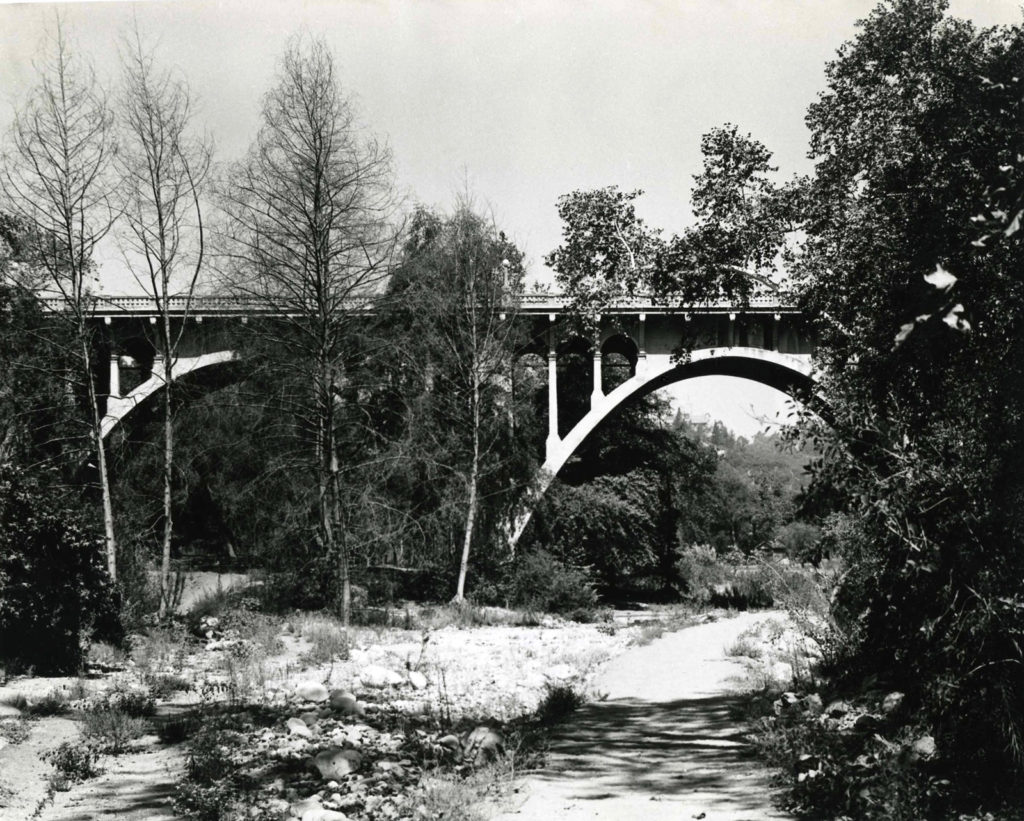
Click to enlarge
Courtesy of the Archives at Pasadena Museum of History (B5-16)
2006 – WPRA started monitoring the re-use of the Desiderio Army Reserve Center, then open for redevelopment and participated in the public comment process.
2007 – WPRA engaged in the discussion about City Council’s decision to approve forDesiderio Army Reserve Center a nine-unit affordable bungalow court to be built by Habitat for Humanity, with 75% of the space devoted to open space, once the federal government releases the property to the City.
2009 – Supported listing of central and lower Arroyo Seco on the National Register of Historic Places.
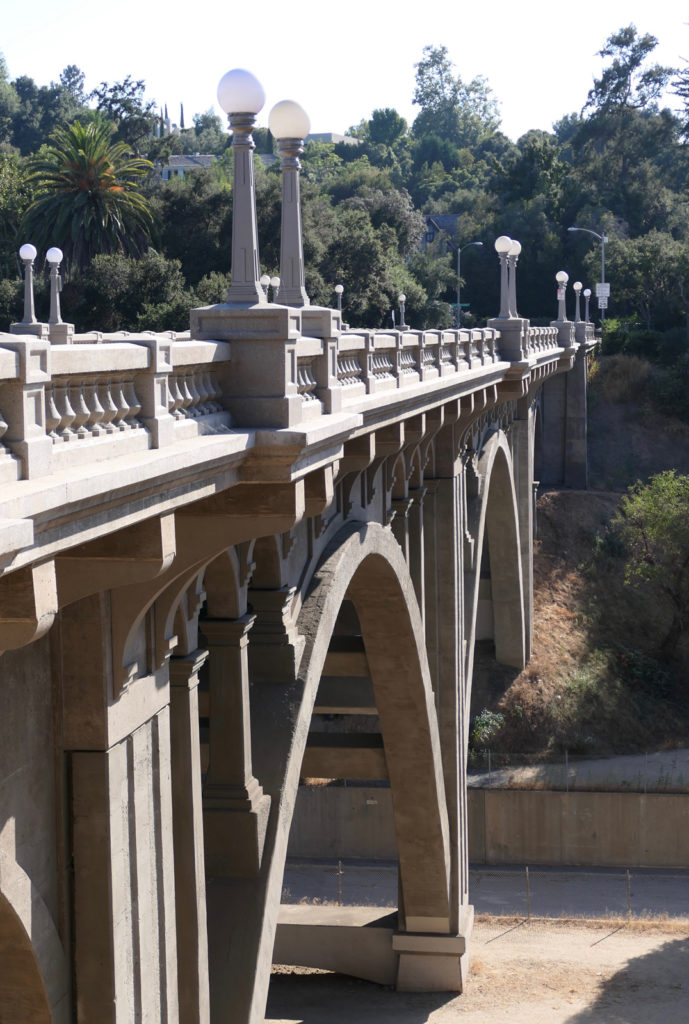
(La Loma Bridge)
2012 – The WPRA pressed for water capture and environmental safeguards within the pending Devil’s Gate sediment removal project.
WPRA supported the La Casita Foundation refurbishing project.
2013 – WPRA co-sponsored a successful community “Friendraiser,” which raised $45,000 for the La Casita Foundation’s refurbishing project.
2014 – The WPRA formally objected to the County’s aggressive remediation plan for removing 5 million cubic yards of more of dirt and debris from the Devil’s Gate Dam and advised alternatives.
2017 to 2019 – WPRA strongly advocated with written documentation a slow, smarter and less disruptive removal of sediment around the Devil’s Gate Dam. This advocacy continued to reveal the air pollution and eco damage already in progress.
2018 – WPRA presses City to remove dead brush and trees in the Lower Arroyo to reduce fire hazards.
2019 – WPRA opposed the building of a public restroom within the new neighborhood Desiderio Park.
2020 – WPRA opposes the Arroyo Seco Canyon Project DEIR with spreading basins as well as the Lower Arroyo Habitat Restoration Plan as proposed and then suggests alternatives.
2021 – WPRA requests that the City delay implementation of the current options for suicide-deterring Vertical Barrier Enhancements to the Colorado Street Bridge, and continue to conduct an in-depth review of alternatives, including any technologies that could replace the physical barriers, or enhance a reduced height of those barriers.
WPRA Community Surveys 1961 ‑ 2017
1961 – The Proto WPRA conducted a postcard survey of residents to buttress arguments for retention of the single-family character of the area, which the General Plan would have rezoned for apartments.

Click to enlarge.
Courtesy of the Archives at Pasadena Museum of History (A3–23)
1988 – WPRA posted a survey within its newsletter: What Do You Think About the Orange Grove Safety Control Measures?
1993 –The WPRA initiated the Southwest Pasadena Traffic Study sought realistic methods to manage and “diffuse” traffic in areas that are overburdened by commuter traffic, especially feeding into the Pasadena Freeway and traffic exiting the end of the 710 “stump” at California.
1996 – Conducted a Southwest Traffic Study Questionnaire asking for resident comments and suggestions.
2002 – Surveyed the San Rafael area residents to identify their top concerns: overdevelopment in West Pasadena (Legacy Project) and the growing traffic problem.
WPRA retained a traffic consultant to conduct an independent professional analysis of traffic impact out of concern that the Legacy Project proposal was so large it would increase the number housing units in the WPRA service area by 40%.
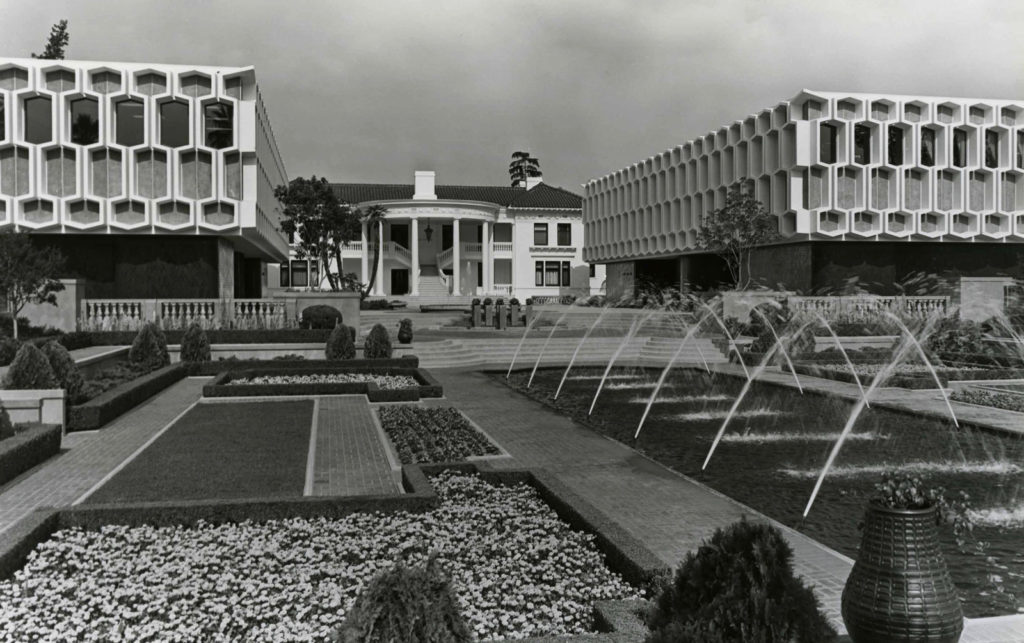
Click to enlarge.
Courtesy of the Archives at Pasadena Museum of History (A3-8)
2003 – WPRA continued to address the Ambassador West Campus proposal by conducting another survey among residents of the WPRA service area and adopting a position about a reduced density and traffic congestion.
2005 – Surveyed West Pasadena citizens’ attitudes about the NFL leasing the Rose Bowl —nearly 60% were totally against the idea, while only 10% favored it.
2009 – Conducted survey of residents of ZIP code 91105: residents were most concerned about crime (71%), traffic congestion (67%), development design (65%) and overdevelopment (63%).
2012 – The WPRA conducted another survey of area residents about the possibility of an NFL team temporarily leasing the Rose Bowl Stadium until its permanent new stadium could be built: 43% were against the idea under any condition; 37% would consider it if certain conditions were met; 19% expressed unconditional approval of the idea.
2017 – Conducted a broad survey of the community to determine the best approach to regulating short-term rentals.
Maintaining the Integrity of Our Neighborhoods 1960 ‑ 2021
1960 –Marge, Becky and Kay, along with Richard Jencks, who was to become the WPRA’s first president, and others joined together as “Pasadenans FOR ‘vote NO’ on High Rise,” to derail plans to construct two 14-story high-rise buildings.
1961 – The Proto WPRA conducted a postcard survey to buttress arguments for retention of the single-family character of the area, which the General Plan would have rezoned for apartments.
1963 – Opposed a proposal by the Planning Commission to rezone for medium-rise garden apartments land north of Colorado Boulevard on Orange Grove Boulevard.
1980 – WPRA supported the downzoning of the west side and other Pasadena residential neighborhoods.
1981 – Supported a petition circulated by “Neighbors for Open Government” to make the Pasadena Redevelopment Agency (PRA) more responsive to citizens.
The WPRA monitored relocation, rather than demolition, of several “fine” homes to make way for a condominium project on South Grand.
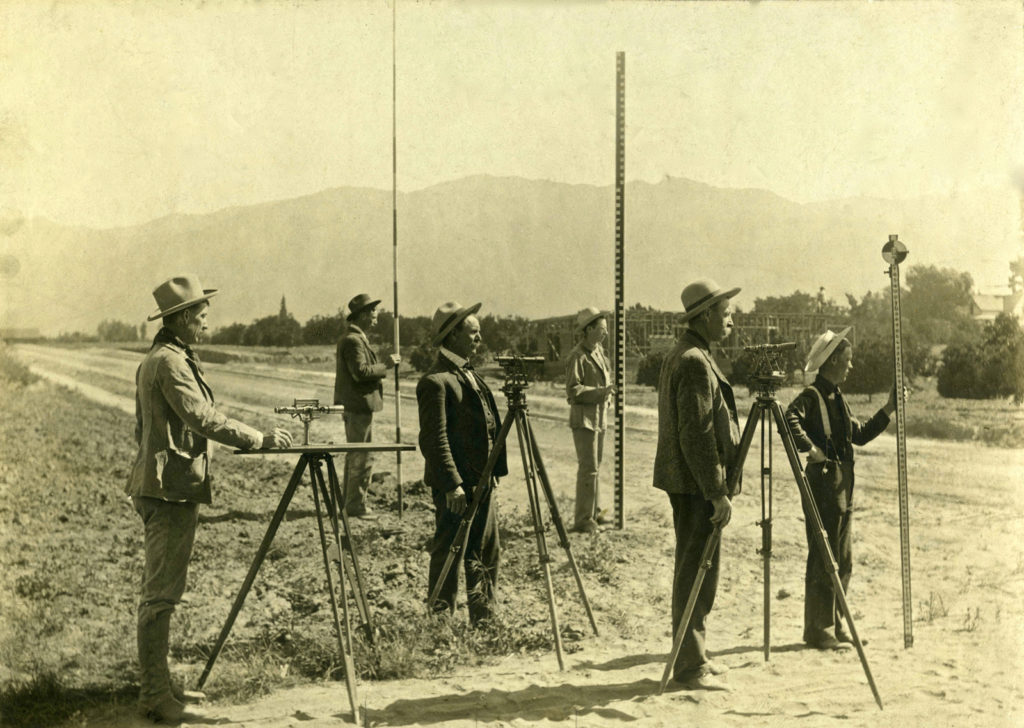
Click to enlarge.
Courtesy of the Archives at Pasadena Museum of History (S40–45)
1983 – Monitored the three-year process to approve the Urban Design Plan, stressing the need for strong design guidelines and expressing concern about the significant growth the plan permitted.
1986 – Supported City’s new ban on overnight street parking to recommended sparing issue of overnight parking permits—to maintain the Pasadena “quality of life.”
1991 – WPRA started its participation with the analysis and decision-making for Pasadena’s next General Plan.
1994 – WPRA participated in the community discussion related to crowd and traffic handling, as well as security issues, for the World Cup matches that would be held at the Rose Bowl Stadium.
The WPRA expressed concern over potential horn and wheel noise from the Blue Line (later the Gold Line) and urged MTA representatives to test train horns, which it did.
1996 – The WPRA participated in the discussions to create a West Gateway Specific Plan.
1999 – The WPRA urged residents to participate in the planning process for Legacy Partners which planned to build 1,943 units on the West campus and the East campus.
2002 – WPRA categorically opposed the Legacy Project’s high density housing proposal, even when the developer reduced the projected units from 1,943 to 1,727.
To help mitigate congestion around the proposed Ambassador Campus Development Plan, the WPRA retained a traffic consultant to conduct an analysis of traffic impact out of concern that the proposal was so large it would have increased the number housing units in the WPRA service area by 40%. Legacy withdrew from the Project.
2003 – The WPRA adopted principles for the development of the Ambassador West Campus, stipulating: lower density, restricted height, compatibility and controlled traffic requirements.
2004 – WPRA expressed surprise (and dismay) that City staff recommended construction of a 60-unit residential development on the site of the former Friends Paper Company.
WPRA applauded the plan to convert a 2.5 acre lot at Arlington and S. Pasadena into a Mediterranean climate botanical garden which became the Arlington Garden.
2005 – Opposed the Sares-Regis’ plan to construct 829 multi-family units and 30,000 square feet of retail/commercial development in the Ambassador College East campus.
2006 – After reviewing the Draft Environmental Report, the WPRA continued to express concerns over the density of the Sares-Regis proposal to develop the Ambassador East and West campus projects.
2007 – Urged residents to become engaged when the City initiates the next update of the General Plan with an approach to development which is more balanced and moderated than in the past.
2008 – Continued to track the Ambassador West Project as developers changed again. Announced that Dorn Platz had withdrawn from the Ambassador West project.

2010 – WPRA explored how the General Plan, which was being updated, could be impacted by state legislation intended to encourage the majority of growth and development to occur in urban transportation hubs.
2012 –WPRA started monitoring City planning for Central District General Plan by advocating that change must be harmonized to preserve Pasadena’s historic character and environment.
2013 – WPRA established its position against “mansionization”.
2014 – WPRA continued to consult with Ambassador Gardens East project manager as design moved forward for lower campus and what would become the west campus named the “Grove” and “Jaimeson Place”.
2015 – WPRA continued to support the curtailing of allowed mansionization by the current Pasadena zoning regulations.
2017 – The WPRA alerted the community to the potential impacts of short-term rentals such as Air B&B and supported a balanced, nuanced approach to STR regulation.
2018 – The WPRA continued to track and educate the public about the state’s legislative bills which override Pasadena’s city planning and zoning regulations.
2019 – The WPRA continued to keep its constituency informed about the state’s housing increase mandates which influence Pasadena’s planning and zoning ordinances.
2020 – WPRA advises Mayor Tornek, City Council and the Planning department for Phase 2 – the “mansionization” Zoning Code Amendment, stating specific suggestions & potential guidelines. Council passes unanimously compatibility guidelines for the flats of Pasadena incorporating much of WPRA’s advice.
WPRA, along with Linda Vista-Annandale Association and Madison Heights Neighborhood Association continue to support Pasadena appealing the SCAG draft 2021-2029 RHNA allocation which would result in an untenable number of out-of-scale, out-of-character, dense, large buildings with related traffic and other infrastructure impacts.
2021 – WPRA recommends to Pasadena Senior Planner adjustments to guarantee tree maintenance, density & height reductions of residential units, widening the paseos & deign compatibility.
WPRA strongly opposes SB 9 which will allow up to 8 dwelling units on a lot originally zoned for a single family house.
WPRA strongly opposes SB 10 as an excessive, misguided and fatally flawed attempt to pre-empt local land use control.
